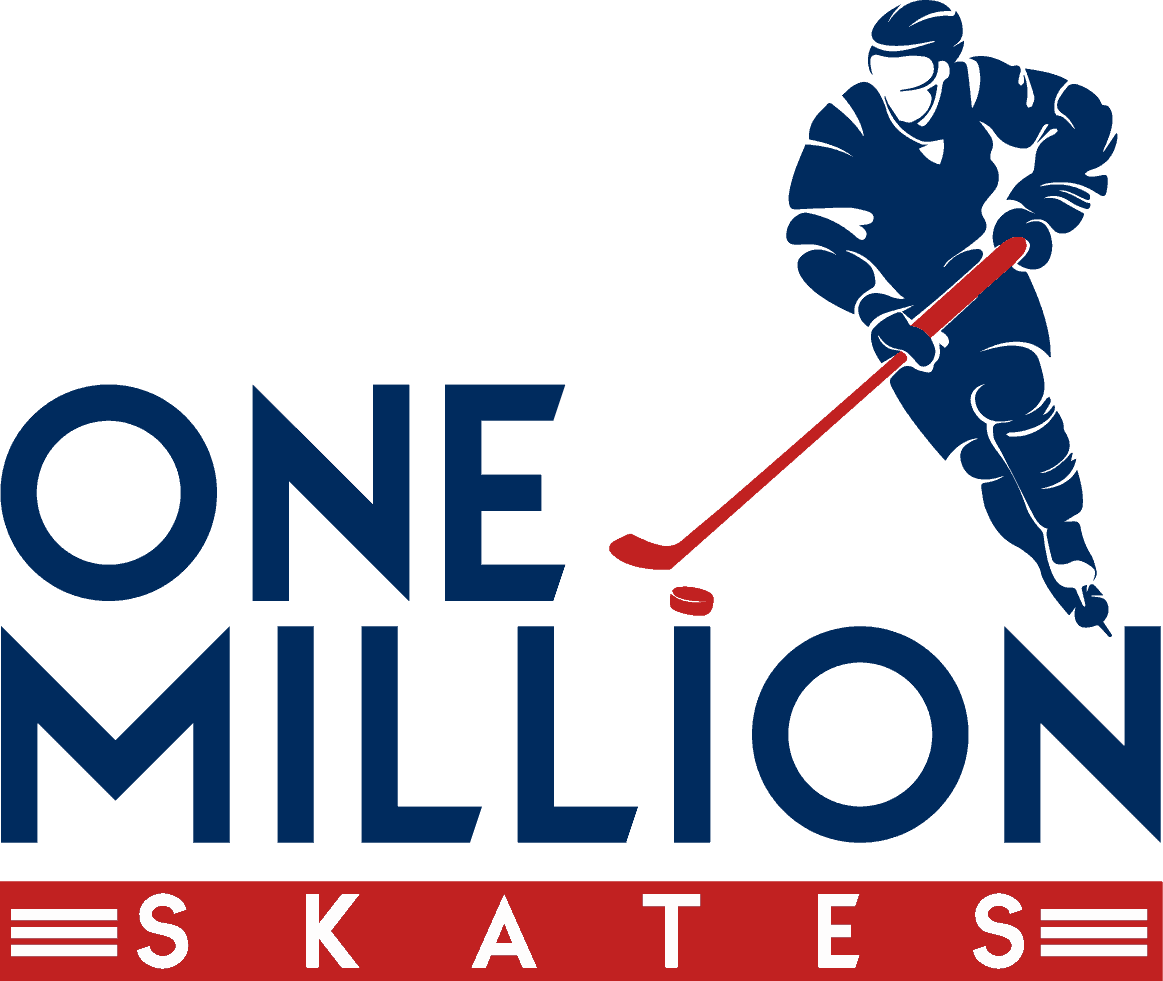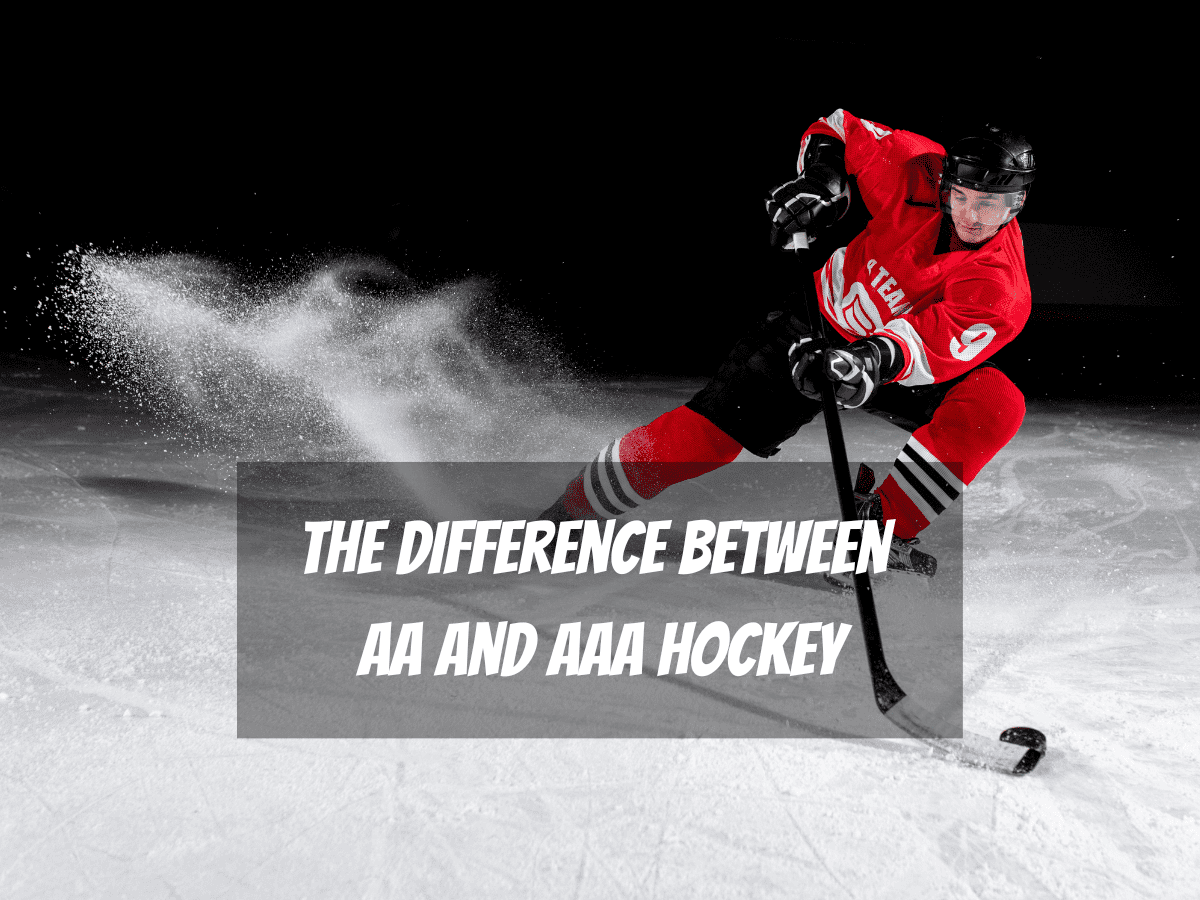You will likely be categorized according to your age and skill level when you play hockey.
AAA and AA are the two highest skill levels, but what distinguishes them from one another?
The main differences between AA and AAA hockey usually relate to the talent level of the players.
Although it is possible to play on both teams, and players in both classes are very skilled, AAA hockey is the most competitive and has the best probability of sending players to Division 1 college hockey or the NHL.
The ultimate goal of many hockey players is to reach the highest level.
Continue reading if you want to learn more about the contrast between AA and AAA hockey and how the various levels and divisions of hockey are organized.
What Is AA Hockey?
AA Hockey is ranked as "AA" and is considered a level below "AAA" based on the skill levels of its players.
Nevertheless, it is the second-highest level, and junior players who thrive in AA hockey still have the opportunity to play Division 1 college hockey.
Junior AA hockey is often referred to as Tier 2 hockey rather than AA hockey.
While AA represents a player's talent level, it may be rather confusing since it is further split based on the skill level and the player's age, resulting in multiple AA-level teams being separated per the level of hockey.
For example, a nine-year-old player classified as a "tyke" may play at the AA, AAA, B, or C levels.
Please refer to the section on the various levels of hockey for further information.
What Are The AA Hockey Team Requirements?
For participants in Tier 2, often known as AA hockey, the following requirements must be met:
- Teams are established via tryouts.
- Teams are restricted to district inhabitants only (a total of 3 players from outside the district, aside from in Midget levels with a maximum of six people).
- Each season, players aged 9 and older are restricted to 75 games.
- Underage players are restricted to 40 games each season.
- These participants may participate for free but must pay for a hotel and other costs, such as food and transportation.
What Is AAA Hockey?
AAA Hockey is the highest level of youth hockey. Tier 1 Junior Hockey is sometimes referred to as "AAA" hockey.
In this sense, this is the greatest level a player may attain before going on to the NCAA or, in rare cases, the NHL.
However, like AA, AAA also refers to the ability level of the player, with AAA being the greatest skill level within each level or age group of hockey, making it a higher level than AA hockey.
For example, a 16-year-old Midget Minor player who is capable of competing at the top level would play AAA.
In addition to possessing the essential talents to go from A to AA or AA to AAA, the player must also pass the tryouts.
For lower levels, such as B and C, tryouts are often not held. In other instances, everything depends on the individual's abilities.
Even if the AA player is an exceptional scorer, a AAA team with a sufficient quantity of scorers will look for other skills in a player.
Any parent of a hockey player will tell you that once your child starts playing the sport, it will forever be ingrained in your blood.
If your child is skillful enough to play on a AAA hockey team, this is a good indicator, since the degree of commitment for both player and parent is far more than in travel hockey.
AAA hockey is the next level of hockey if your child has been tearing up the ice in his or her local league or has been a solid player on a travel team.
In the United States, AAA Hockey, often known as "Tier 1 Hockey," is the highest level of youth hockey play.
There are many AAA hockey leagues in the United States and Canada.
In certain leagues, teams are scattered across the United States, whilst in others, teams are concentrated in limited regions of North America.
Examining the biographies of North American NHL players reveals that many of them had played for AAA teams.
Almost every state in the United States has a AAA program.
Even though not all AAA teams are created equal, AAA teams often encounter other AAA teams (and an occasional AA team).
A state may only have one or two AAA teams, but they cannot compete with Michigan's top clubs.
What Are The AAA Hockey Team Requirements?
Tier 1, often known as AAA hockey, is the most competitive level of ice hockey.
To make the team, players must complete the following requirements:
- Teams are established via tryouts.
- Teams may consist of persons from inside or beyond the state.
- Each season, players nine and older are restricted to 75 games.
- Be sure to read our article on AAA hockey and whether or not it is advantageous to play for these elite teams.
Is AAA Hockey More Competitive Than AA Hockey?

AAA Hockey requires much more time than travel and house hockey.
It is common for AAA teams to play more than 60 games in tournaments hosted around the United States each season.
Imagine the cost of bringing your child to hockey contests across the country.
The yearly cost of playing for a AAA squad might vary between $3,000 and $6,000.
Not covered are travel costs, hotel expenditures, meals, and equipment.
If your child is going to participate in AAA hockey, you should be prepared to spend over $10,000 annually.
It may be less if you do not have to travel far to attend games, but you should not count on this.
Occasionally, travel charges may surpass the total team fees and equipment costs.
Given the number of practices and games at the AAA level, you should get more durable equipment.
You do not need to acquire the same equipment as NHL players, but you should select equipment that is durable and does not deteriorate quickly as the season progresses.
If you want the finest equipment, you will have to spend somewhat more than $1,000 for the whole set.
If you want to get a quality piece of hockey equipment that will last a whole season as you grow older and larger enough to wear senior equipment, you will likely need to spend at least $1,000.
Aside from the higher cost and level of competition, playing for a AAA team is equivalent to playing for an A or AA travel team.
You must audition for the squad, be among the best competitive players in your region, have strong enthusiasm for hockey (since it is a time-consuming commitment), and have the financial means to participate.
What Are The Different Stages And Divisions Of Hockey?
In the United States, the tiers and levels of hockey differ depending on the age and skill level of the participants.
In an attempt to clarify this to both young players and youngsters, we have outlined the different tiers and levels of hockey below.
The various levels of hockey are defined first by the age and then by the skill level of the players.
Nevertheless, each level is characterized by both age and skill level. The following WikiMili table provides a visual representation.
In addition, we have an article that elaborates on the minimum age at which minor hockey players may begin playing AAA hockey.
The Tiers Of Hockey
The three divisions of junior hockey are differentiated by the skill levels of the players.
The United States Hockey League (USHL) is the highest level of competition.
At this level, athletes are between the ages of 15 and 20, and it is at this age that they are eligible for Division 1 college eligibility.
Tier 1 may alternatively be classified as "AAA," much like the highest level in the Canadian system.
Tier 2 is the level behind Tier 1, and it includes the NAHL (North American Hockey League).
This league, while being of a lesser caliber, tries to see itself as an alternative to the USHL.
If a player's ultimate goal is to play for a Division 1 College team, though, playing at this level is also a possibility.
Tier 2 may be classified either as AA or A. Tier 3 is lower than Tier 2, although this does not indicate that it is inferior.
The key difference is that these players must pay to participate, and the teams are dispersed around the country.
In Tier 3, players are separated by age, therefore 15-year-olds and 20-year-olds will not be on the same team.
It is the continuation of youth hockey in a way. Athletes under the age of 18 who compete in Tier 3 are theoretically members of a Tier 1 youth team.
Tier 3 is often known as "A" and is the lowest competitive level of hockey.
Recreational or developmental hockey is considered below this level, such as house league and select teams, which are often known as "B" or "C" level hockey.
AAA Hockey Stages
AAA Hockey starts with the Squirt Minor (9-year-old) age group and continues through the Midget Major (12-year-old) age group (18 years old).
AAA hockey players get the chance to play in front of college and professional scouts at almost every tournament.
In the United States, the hockey scouting process differs significantly from almost every other sport.
The first year of a player's (15-year-old) Midget Minor career is known as their "draught year."
After completing their first year of Midget Minor, your child will be eligible to enter the draughts of a variety of junior hockey leagues in the United States and Canada (Find out Everything You Need To Know About The NCDC (Is It A Good League?) here).
A 2002-born player will be in their "draught year" during the 2017-2018 season.
Your child has the opportunity to join many junior leagues (if they are good enough).
Even if a child is playing at this level, there is no guarantee that he or she will be selected by a junior league.
Permit your child to choose whether they want to commit to playing AAA hockey.
The technique of pressing children to be picked for the next level or to get a college scholarship is inappropriate.
Even at this level of youth hockey, a youngster should not be compelled to perform against his or her will.
Final Thoughts
Although there are no substantial differences between AA and AAA hockey, it is very unusual for AA and AAA teams to compete at lower levels.
There is a tiny difference between junior and senior players.
Tier 1 or AAA players are the best at the junior level, play for free, and have a high possibility of playing for the NCAA.
AA or level 2 junior players still have a shot at success.

